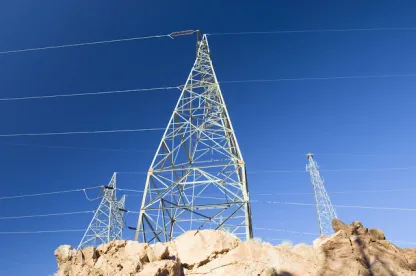The North American Electric Reliability Corporation (NERC), the regulatory authority tasked with assuring the reliability of the North American Bulk Power System (BPS), released a report on April 21, 2015 calling for EPA to push back its Clean Power Plan goals to “allow for more time to address potential BPS reliability risks and infrastructure deployment requirements.” NERC’s report, a Phase 1 Assessment, comes after an Initial Reliability Review that reached similar conclusions in November of 2014. The Phase I Assessment will be followed by Phase II and Phase III Assessments that will provide more detailed analyses of EPA’s final rule as well as state implementation plans.
Key to NERC’s recommendation in this report are timing considerations related to the anticipated resource and transmission changes that will likely be required for Clean Power Plan compliance:
Geographic and resource diversity, and a complex regulatory environment, present challenges to the long-term development of electric power infrastructure. The time required for new facilities to be developed and placed in service may likely exceed the CPP’s proposed compliance targets. Because the industry will be implementing plans simultaneously, it is uncertain whether adequate equipment (e.g., generators, solar panels, wind facilities, transformers, and conductors) and resources (e.g., engineering, procurement, and construction) will be available to support those plans. . . . It is likely that infrastructure to support the required interim reduction in CO2 emissions at this pace will not be in service by 2020.
To support its findings, NERC highlights several important factors:
-
A large amount of existing generation capacity is already expected to be retired between 2015 and 2020 based on NERC’s modeling of a reference case. Based on its modeling scenarios for the Clean Power Plan, NERC estimates that as much as 43 gigawatts of capacity may be retired between 2016 and 2020. The projects necessary to replace retired capacity would require significant lead time, putting substantial pressure on the 2020 targets.
-
Similarly, the report identifies significant transmission deficiencies that will need to be reinforced based on NERC’s models. Those projects can take between six and fifteen years to “engineer, site, permit, and construct,” and thus will not be available in time for EPA’s 2020 targets, the assessment says.
-
Because the Clean Power Plan will likely result in increased use of natural gas generation — the report estimates an additional 80 gigawatts of natural gas capacity by 2030 — gas pipeline capacity upgrades will be necessary to “relieve pipeline constraints.” NERC estimates the upgrades would need to support a 30 percent expected increase in U.S. natural gas demand.
Ultimately, the report concludes that “[t]he time required for new facilities to be developed and placed in service may likely exceed the CPP’s proposed compliance targets” and that “[p]olicy makers, states, regions, and regulators (including the EPA) should develop implementation plans that allow for more time to address potential BPS reliability risks and infrastructure deployment requirements during the transition period.”




 />i
/>i

